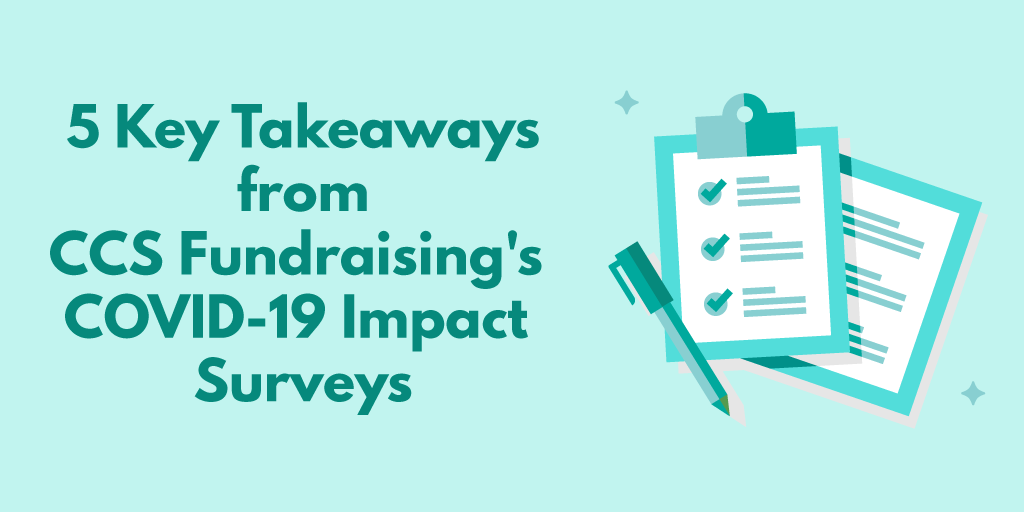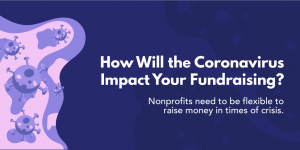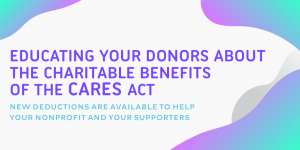The last three months have changed nearly every conversation about fundraising. The coronavirus outbreak turned the world upside down, seemingly overnight, and left nonprofit professionals searching for ways to adapt.
CCS Fundraising released two surveys intended to help analyze how nonprofit organizations were initially impacted by the pandemic. The first report focused on data from April 20 to May 1. The second report built on those findings with new data compiled from May 21 to June 1.
CCS Fundraising built these reports to provide organizations with the information they need to make clear, thoughtful decisions through the crisis and into the future. These surveys provide insight into how organizations of all sizes and with different missions were impacted by the outbreak.
Here are our 5 most impactful takeaways from the surveys, and our advice and what your organization can do to with this information:
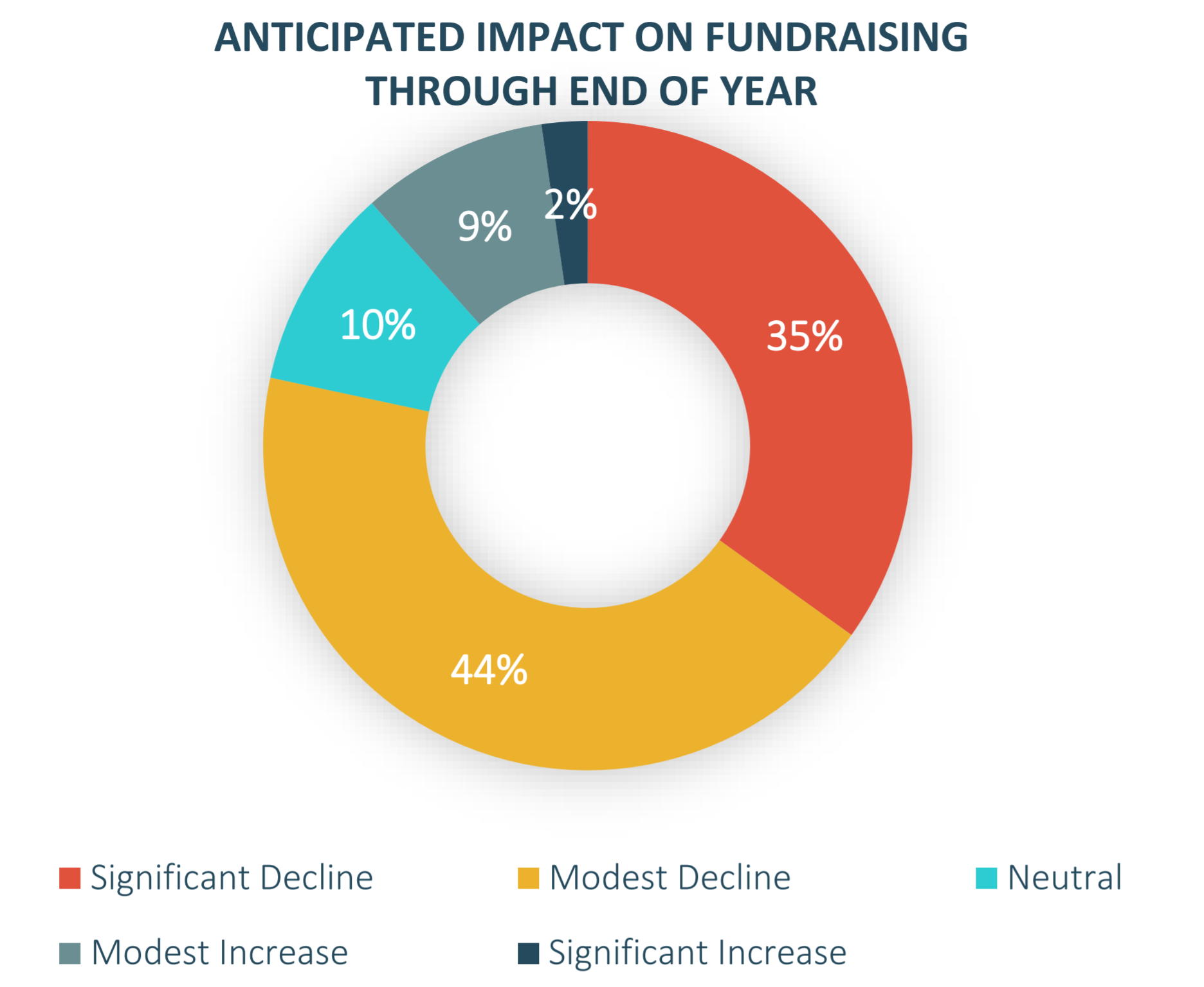
1. Most Organizations Expect a Decline in 2020
In their initial survey, CCS Fundraising reported nearly 79 percent of respondents expected a decline in fundraising for the remainder of 2020. But in their second report, that number dropped to 72 percent.
So, the overall outlook is more positive now than a month ago. But nonprofits are still embracing for a down year. In fact, 27 percent of the organizations in the second survey still expect a significant decline in their fundraising revenue.
However, 11 percent of the participating organizations expect to see increased giving for the remainder of 2020, according to the initial survey.
The main difference here is a nonprofit’s area of focus. Healthcare organizations, especially those combating the pandemic on the frontlines, are more likely to see an increase. Hospitals and health care organizations reported an expected 26 to 32 percent increase in revenue according to the CCS Fundraising surveys.
But what about all of the non-healthcare focused organizations out there? What can you do to adjust if you are projecting lower fundraising totals in 2020 than in years past?
One of the most important steps is finding new, creative ways to diversify your fundraising revenue. For example, if you don’t have one already, a monthly giving program can encourage donors to give more while leveling some of the peaks and valleys in your fundraising.
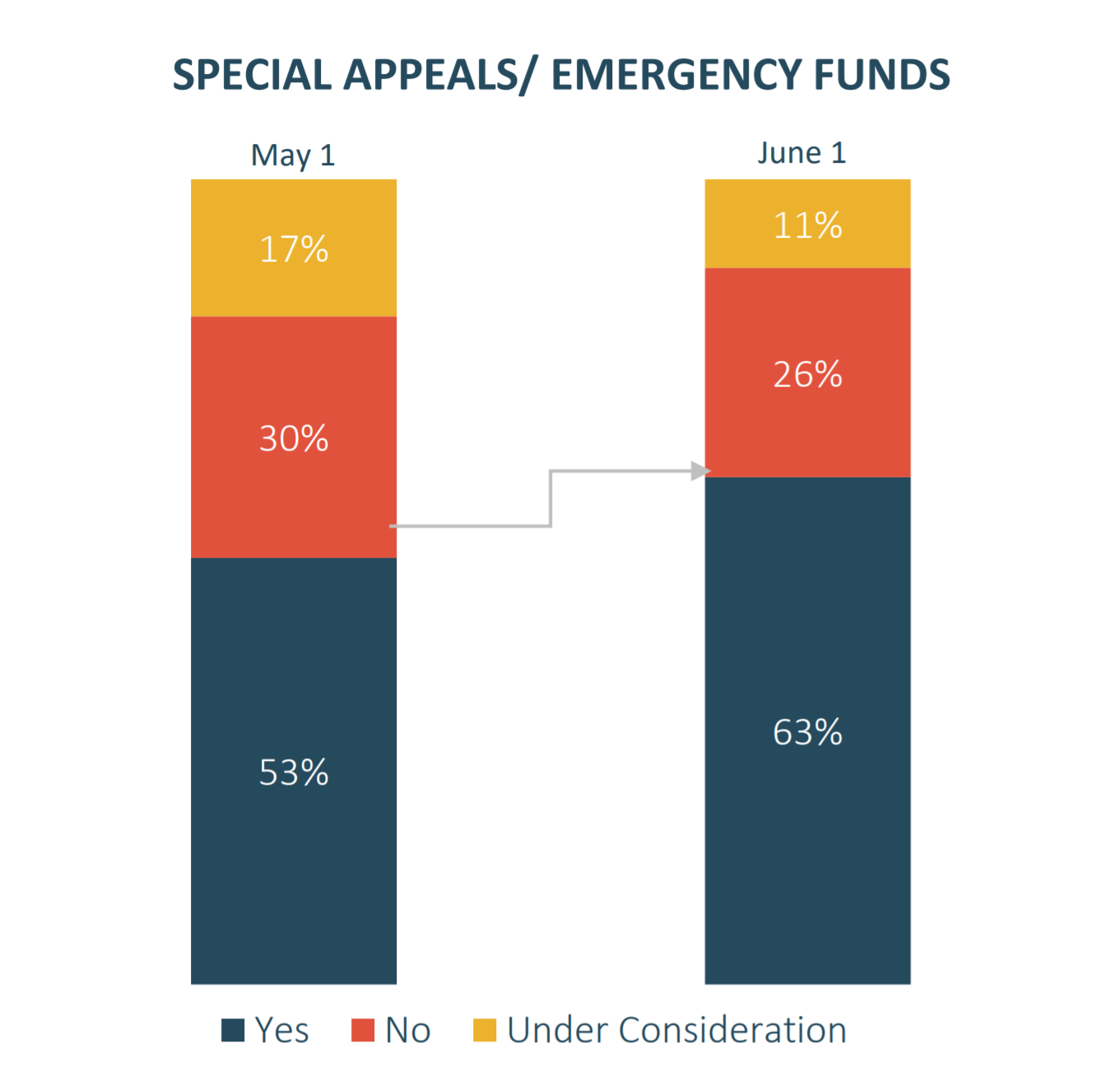
2. Fundraisers Have Been Forced to Get Creative
There was a lot of confusion for fundraisers back in March. While some organizations took the lead and sent out a special COVID-19 appeal, many others hesitated and felt like it was not the right time to ask.
So, what can you do? If you didn’t send out a special appeal in March, April, or May, you will need to take some extra steps for your next major appeal.
For example, educate your donors about the new charitable benefits of the CARES Act.
Individuals who normally take the standard deduction on their taxes can also deduct up to $300 in gifts for 2020. Additional allowances are made for percentage of charitable gifts to income during this year.
So, make sure they know that!
Likewise, many nonprofits were planning a big event in the spring, were forced to cancel, and had to scramble to find new ways to engage their donors. But for the most part, nonprofits were able to adjust.
According to the second report, just under 2 of 3 respondents said they were considering or had hosted a virtual fundraising event. A similar percentage reporting they used a special appeal or emergency fund strategy.
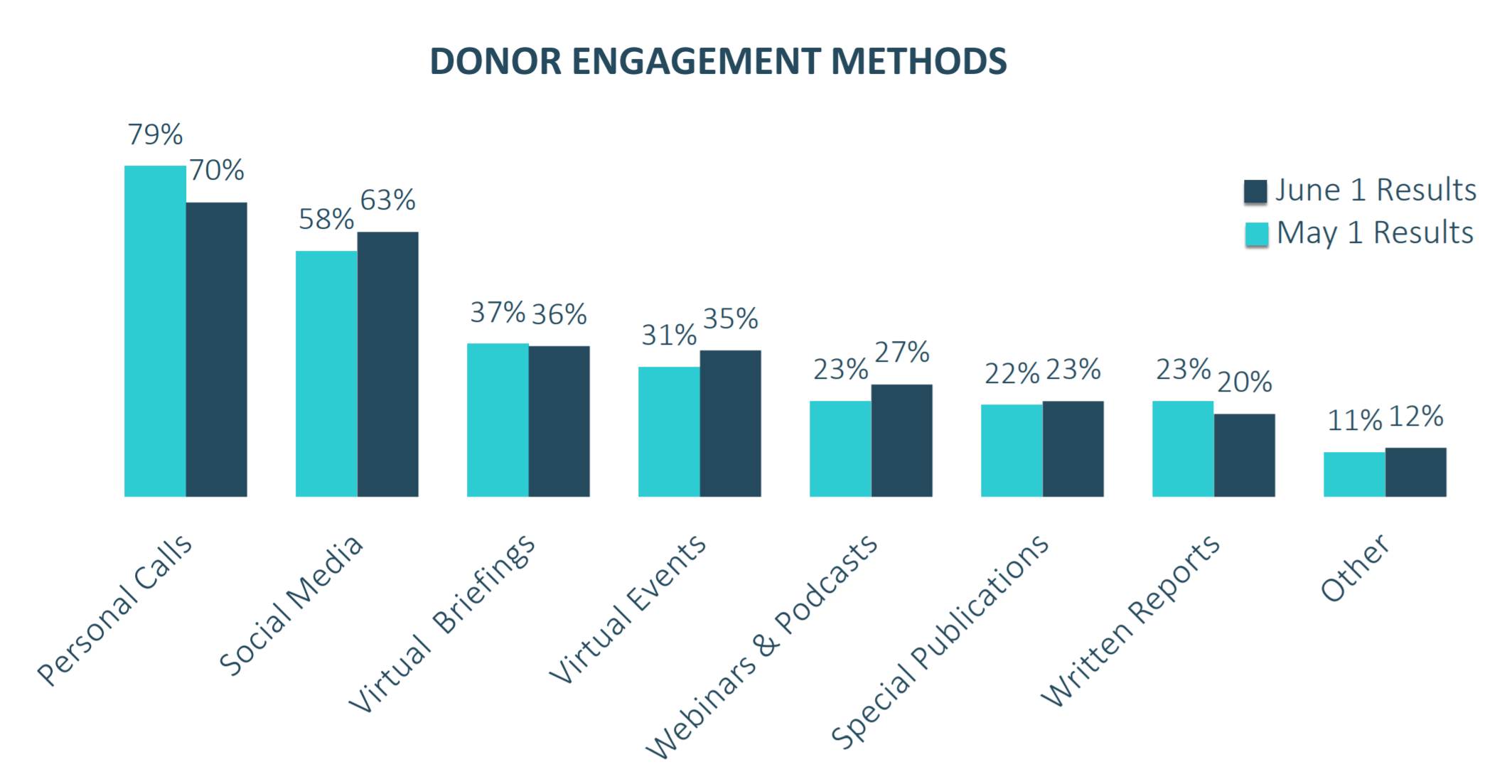
3. Keep Up With Your Communications
Since the pandemic began, we’ve been talking about the importance of keeping in touch with your donor base. Your donors want to know what you’re up to. And you should always be working on maintaining your relationships.
Plus, you won’t know if a donor wants to give if you don’t reach out!
According to the first CCS Fundraising report, general appeals to all stakeholders were the most prioritized strategy among respondents. Direct personal appeals to major donors was a close second.
This is a great time to put a little more care into your major donor outreach. The coronavirus pandemic and the resulting economic shutdown hit the lower and middle classes the hardest. In most cases, these were the people who could not easily transition to working remotely and lost their primary source of income.
But your major donors were probably able to weather the storm. So, it’s no wonder why many of the organizations surveyed are focused on securing gifts from their high-level donors. Give your most loyal supporters a call to check in, talk about your ongoing work, and steer them towards donating.
And don’t forget to stay engaged with the rest of your supporters! There is nothing more personal than a phone call. But nonprofits are getting more creative to engage with more of their supporters digitally.
More nonprofits are using social media, virtual events, webinars, and podcasts to interact with their donors now than earlier in the pandemic according to CCS Fundraising. These methods can help you reach large audiences in new ways that are exciting for your supporters.
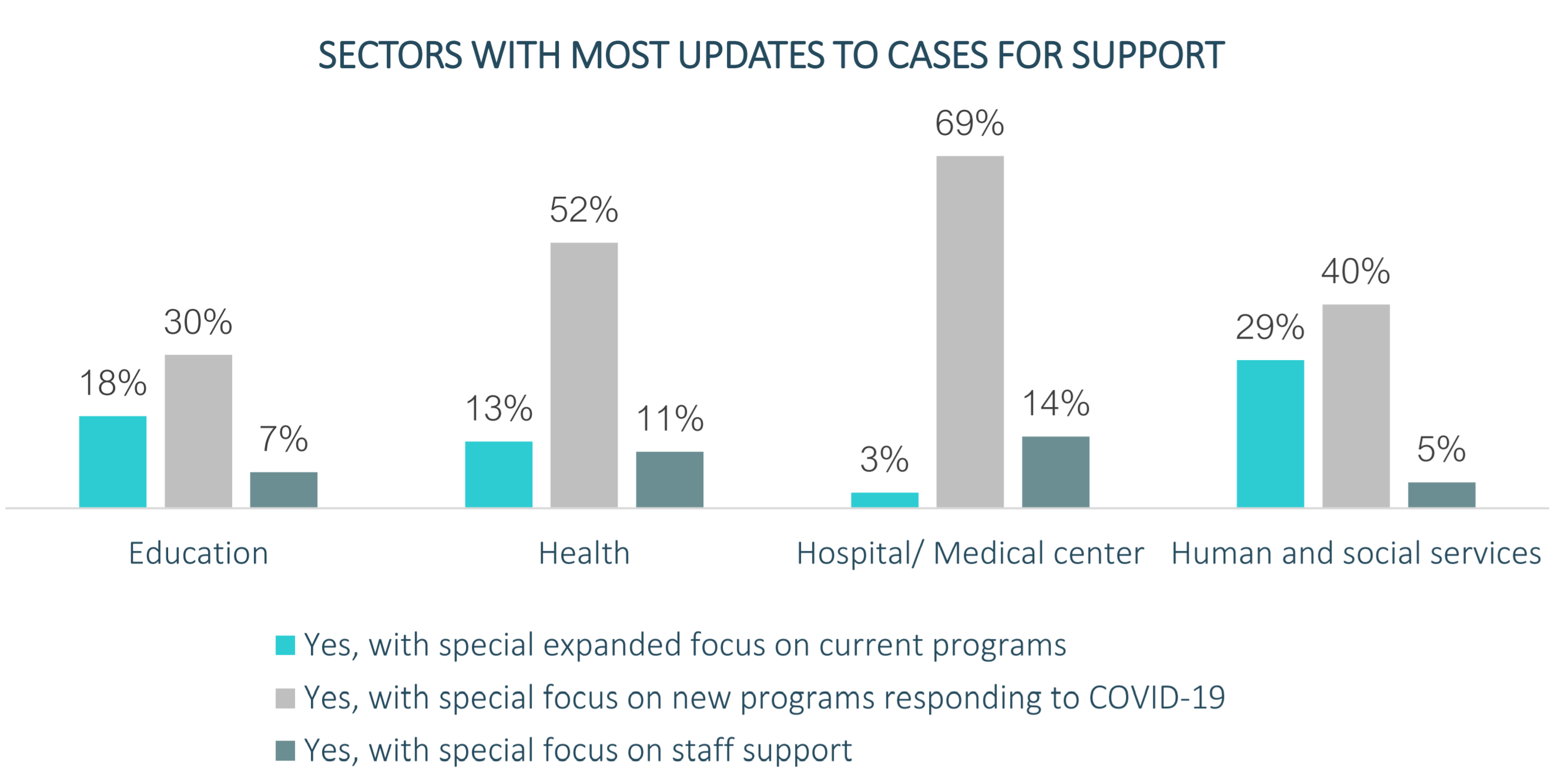
4. Nonprofits are Adjusting their Case for Support
If you’ve worked at a nonprofit for any amount of time, you know that stagnation can kill your momentum. As fundraisers, we can’t get comfortable. We are constantly adjusting better connect with our donors and raise more money.
So, is it surprising that 58 percent of respondents have already adjusted their case for support, with another 12 percent reviewing their case and considering changes, according to the initial report?
Healthcare organizations on the frontlines had an obvious way to tie their mission to the pandemic. 69 percent of hospitals and medical centers updated their case to better focus on new programs related to COVID-19.
But what about organizations that are not on the frontlines and directly involved?
Remember, the immediate needs of frontline organizations does not make your work less important. And if your work mattered to donors before the pandemic, they still care about it now.
So, talk about your work, how it’s been affected by the pandemic, and why you need support now more than ever.
For example, an animal rescue may not have been able to hold their regular adoption events and may be caring for more animals than usual. Let your donors know how this has inflated the cost of caring for the animals and let donors know how they can help.

5. Donor Retention is More Important than Ever
In the last section, we said if a donor cared about your mission before the pandemic, they still care now. It’s no wonder most organizations are more focused on securing donations from established contacts than securing new first-time gifts.
In the initial report, only 18 percent of survey respondents said new donors were a current primary source of support. This number increased slightly to 21 percent in the second survey, but you may still be better off focusing in other areas.
While the data is not included in the reports, it’s reasonable to assume organizations reporting support from new donors are mainly healthcare organizations fighting on the frontlines.
As you know, it can cost more to acquire a new donor than you will receive from their first gift. And your chances of retaining a donor who makes a one-off donation are slim.
So, focus on the people you have already established relationships with. These donors are likely to give more than a new supporter and they don’t need to be fully educated on your work and mission. This gives you more time and space to talk about how your work has been affected by the pandemic and what you are doing to help.
The New Normal of Fundraising
No one could have seen this coming. The coronavirus pandemic was a curveball for fundraisers, and we don’t want you to strikeout!
And as always, we know that a data-driven approach is the key to fundraising success. But we’re not always talking about your own data! It’s important to understand how other organizations have been impacted by the coronavirus and how they are adjusting.
After all, we’re all in this together. And no matter what your work involves, your organization’s mission is designed to help make the world a better place. And your peers are putting out the information you need to adjust and come out of 2020 as strong as possible.

